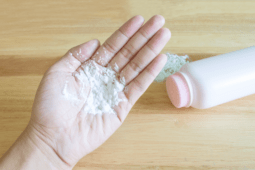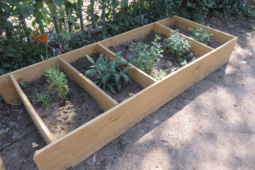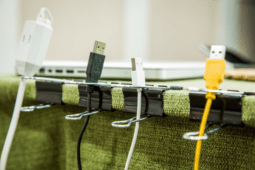Best Wood Types for DIY Furniture Projects: Pros and Cons
When it comes to DIY furniture projects, choosing the right wood type can make all the difference. The type of wood used can affect the durability, aesthetic appeal, and overall quality of the finished product.
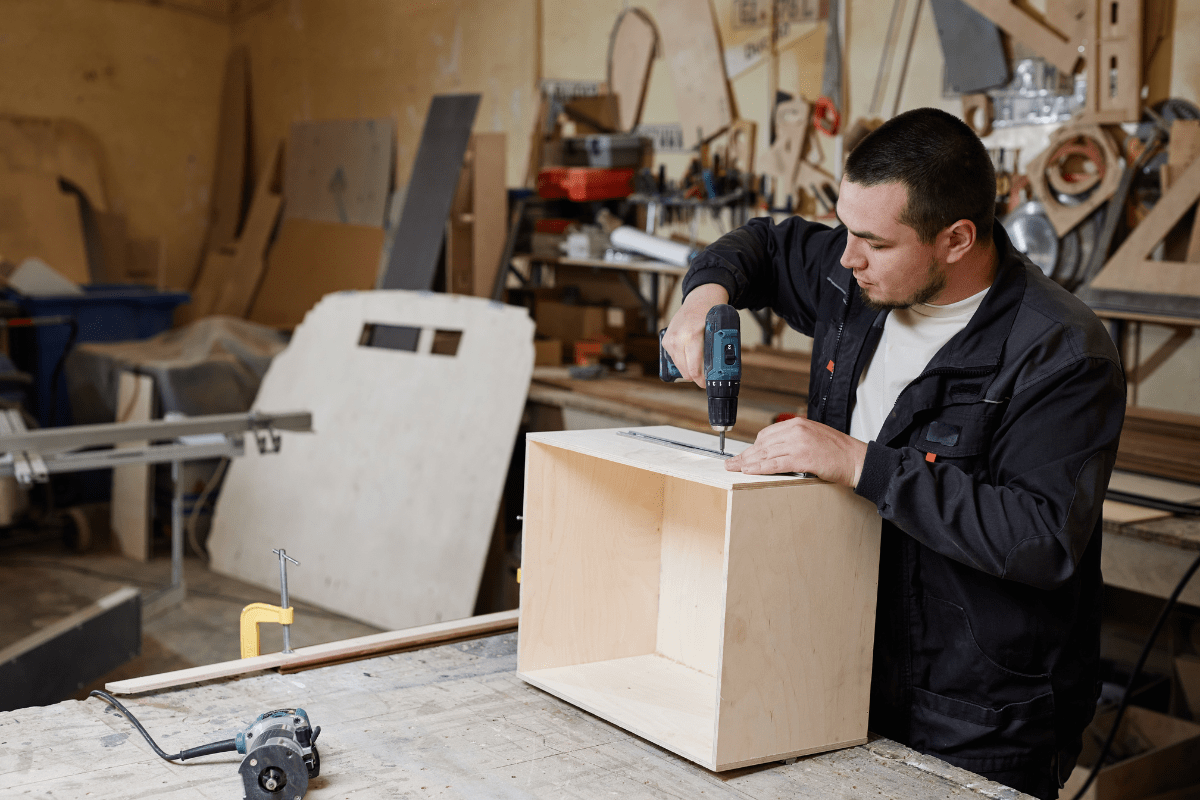
In this article, we will explore some of the best wood types for DIY furniture projects, their pros and cons, and provide examples of popular DIY projects that utilize them.
Pine
*Great for beginners but prone to dents and scratches
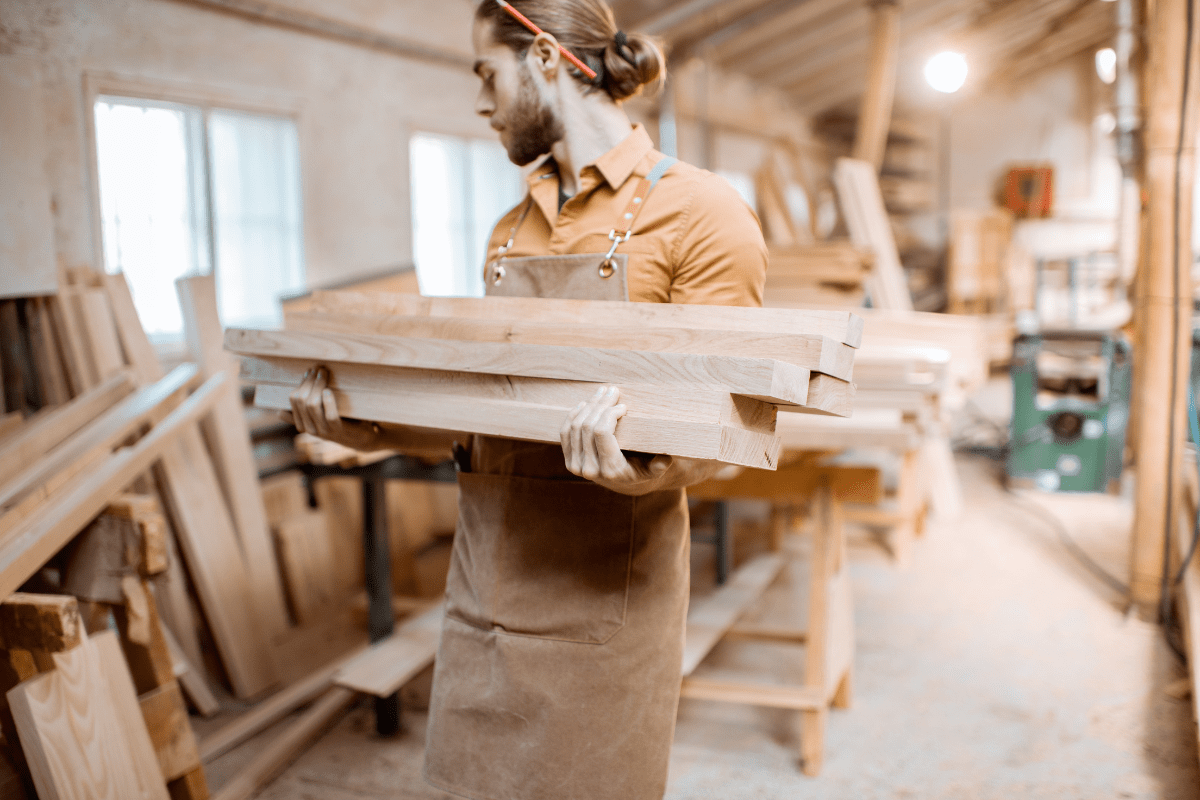
Pine is a popular choice for DIY furniture projects due to its affordability and availability. Pine is a softwood, which means it is easy to work with and can be easily shaped and cut.
Pine also has a unique characteristic in that it develops a natural yellowish-orange color over time, giving it a warm and rustic feel. However, its softness can also be a disadvantage as it is prone to dents and scratches. Pine is a great option for beginners or those on a budget who want to create simple and functional furniture pieces such as bookshelves, bed frames, and coffee tables.
Working with Pine
Here are some tips to help you get the most out of your pine wood projects:
- Choose the right grade of wood: Pine wood comes in different grades, with varying levels of knots, blemishes, and other imperfections. Selecting the right grade of wood for your project can make a big difference in its appearance and durability.
- Use the right tools: Pine wood is relatively soft, which means it can be easily scratched or dented if you’re not using the right tools. Use sharp blades and bits, and be careful not to apply too much pressure.
- Sand carefully: Pine wood has a tendency to absorb stains and finishes unevenly, so it’s important to sand it carefully before applying any treatments. Start with a coarse grit and work your way up to a fine grit, making sure to remove any scratches or blemishes along the way.
- Consider pre-staining: If you’re planning to stain your pine wood project, consider using a pre-stain conditioner to help even out the absorption. This can help prevent blotchiness and ensure a more uniform finish.
- Watch for splitting: Pine wood can be prone to splitting if you’re not careful, especially when drilling or driving screws. To prevent splitting, use a pilot hole before driving screws or nails, and be sure to clamp your wood in place to prevent movement.
Birch
*Relatively inexpensive but may not be as durable
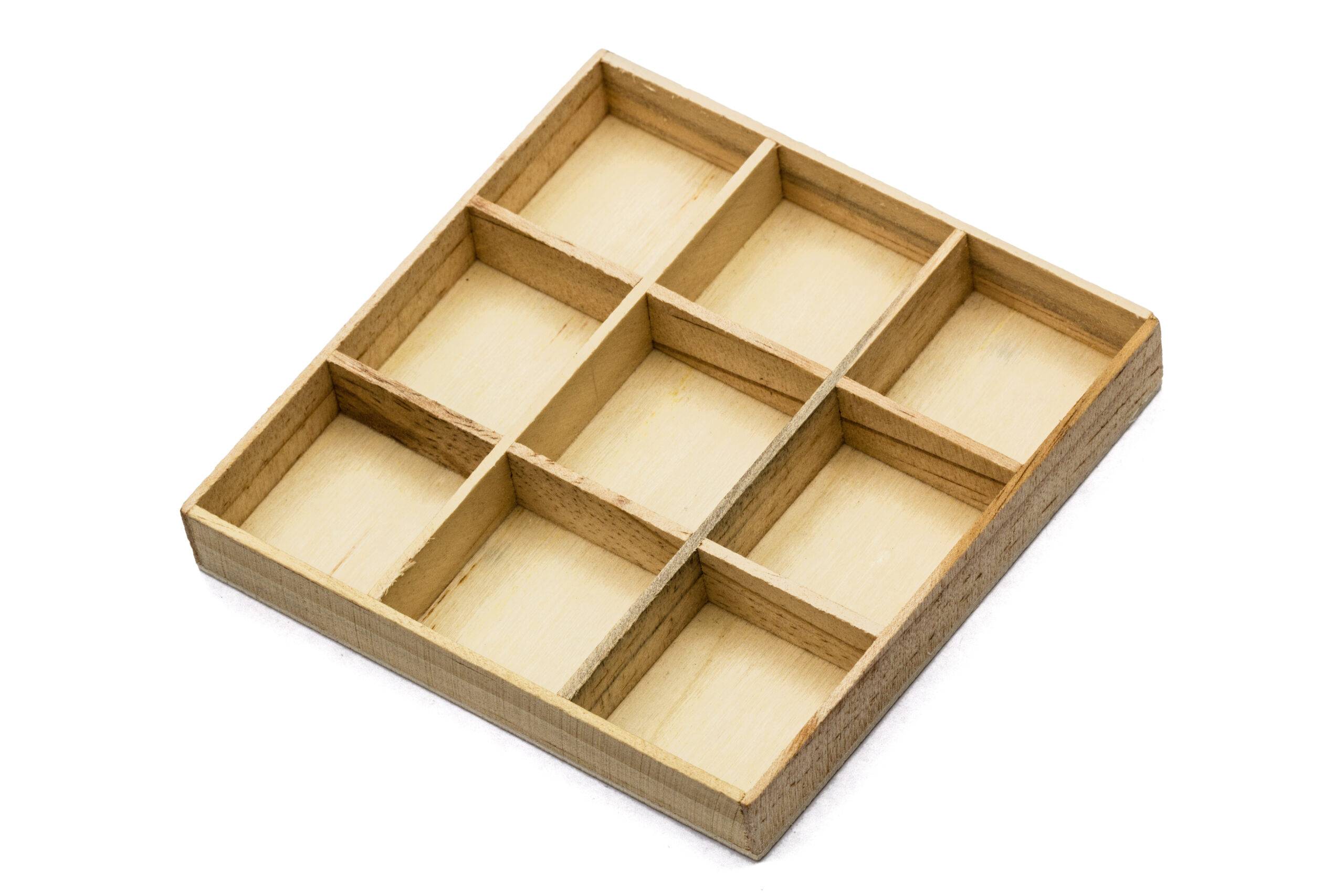
Birch is a hardwood that has a light color and a uniform grain pattern. It is often used for furniture pieces that will be painted or stained. Birch is also relatively inexpensive and easy to work with.
However, it may not be as durable as other hardwoods and can be prone to scratches and dents.
Tips for Working with Birch
Birch wood is a popular choice for furniture, flooring, and other home decor items due to its durability, strength, and attractive appearance. However, working with birch wood can be challenging if you’re not familiar with its properties. Here are some tips to help you work with birch wood:
- Use sharp tools: Birch wood is a dense hardwood that can be tough to cut or shape. Using sharp tools will make the process easier and result in cleaner cuts.
- Sand carefully: Birch wood has a tight grain pattern that can make it difficult to sand. Use a fine sandpaper and work slowly to avoid creating scratches or other imperfections.
- Pre-drill holes: Birch wood can split easily, especially when drilling holes for screws or nails. To avoid this, pre-drill the holes before inserting the fasteners.
- Use the right glue: Birch wood can be difficult to glue due to its density and natural oils. Use a high-quality wood glue and follow the manufacturer’s instructions for best results.
- Finish carefully: Birch wood can be finished with a variety of stains and sealants, but it’s important to apply them carefully to avoid streaks or blotches. Test the finish on a small, inconspicuous area before applying it to the entire piece.
Cedar
*Lightweight and easy to work with but also prone to dents and scratches
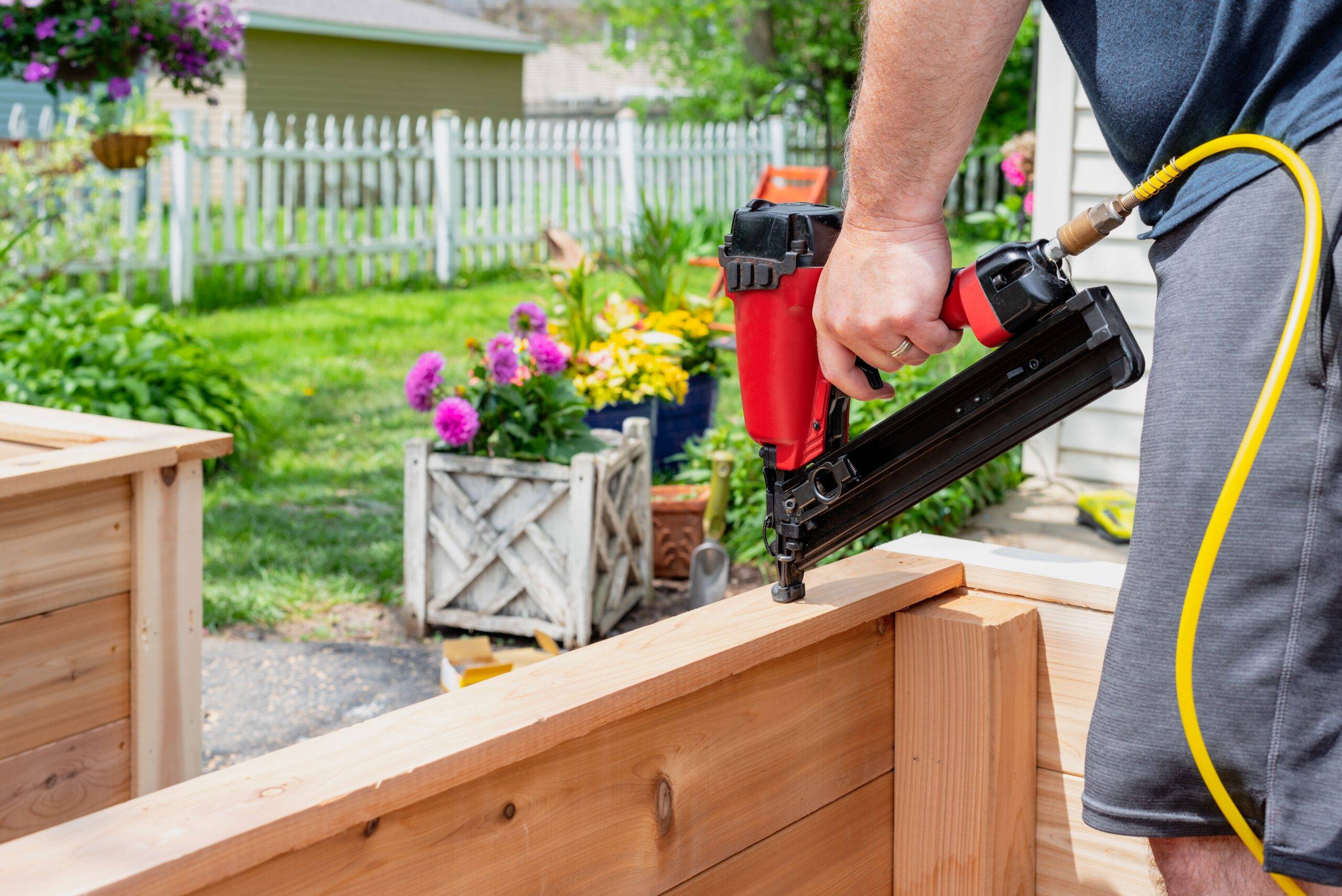
Another softwood option is cedar, known for its natural resistance to insects and weather. Cedar has a distinct aroma that can help repel pests and also makes it a popular choice for outdoor furniture and decks.
It is also lightweight and easy to work with, making it a great option for DIY projects. However, cedar can be expensive compared to other softwoods, and its softness can make it prone to dents and scratches.
Cedar is a great option for those looking to create outdoor furniture, such as Adirondack chairs or picnic tables.
Tips for Working with Cedar
Cedar wood is a beautiful and versatile material that is commonly used in woodworking projects. However, working with cedar wood can be tricky if you are not familiar with its unique properties. Here are some tips to help you work with cedar wood:
- Choose the right tools: Cedar wood is soft and lightweight, which means it can be easily damaged if you use the wrong tools. To avoid this, use sharp blades and avoid using power tools with high speeds or aggressive vibrations.
- Sand carefully: Cedar wood has a delicate grain pattern that can be easily damaged if you sand too aggressively. Use a fine-grit sandpaper and sand with the grain to avoid creating scratches or gouges in the wood.
- Use protective gear: Cedar wood contains natural oils that can cause skin irritation or allergic reactions in some people. To protect yourself, wear gloves, a mask, and eye protection when working with cedar wood.
- Seal the wood: Cedar wood is prone to rot and insect damage, so it’s important to seal it to protect it from the elements. Use a high-quality sealant or wood preservative to help extend the life of your cedar wood projects.
- Enjoy the scent: Cedar wood has a unique and pleasant aroma that can help repel insects and other pests. Take the time to enjoy the natural scent of the wood and appreciate the beauty of this versatile material.
Oak
*Highly durable but can be expensive
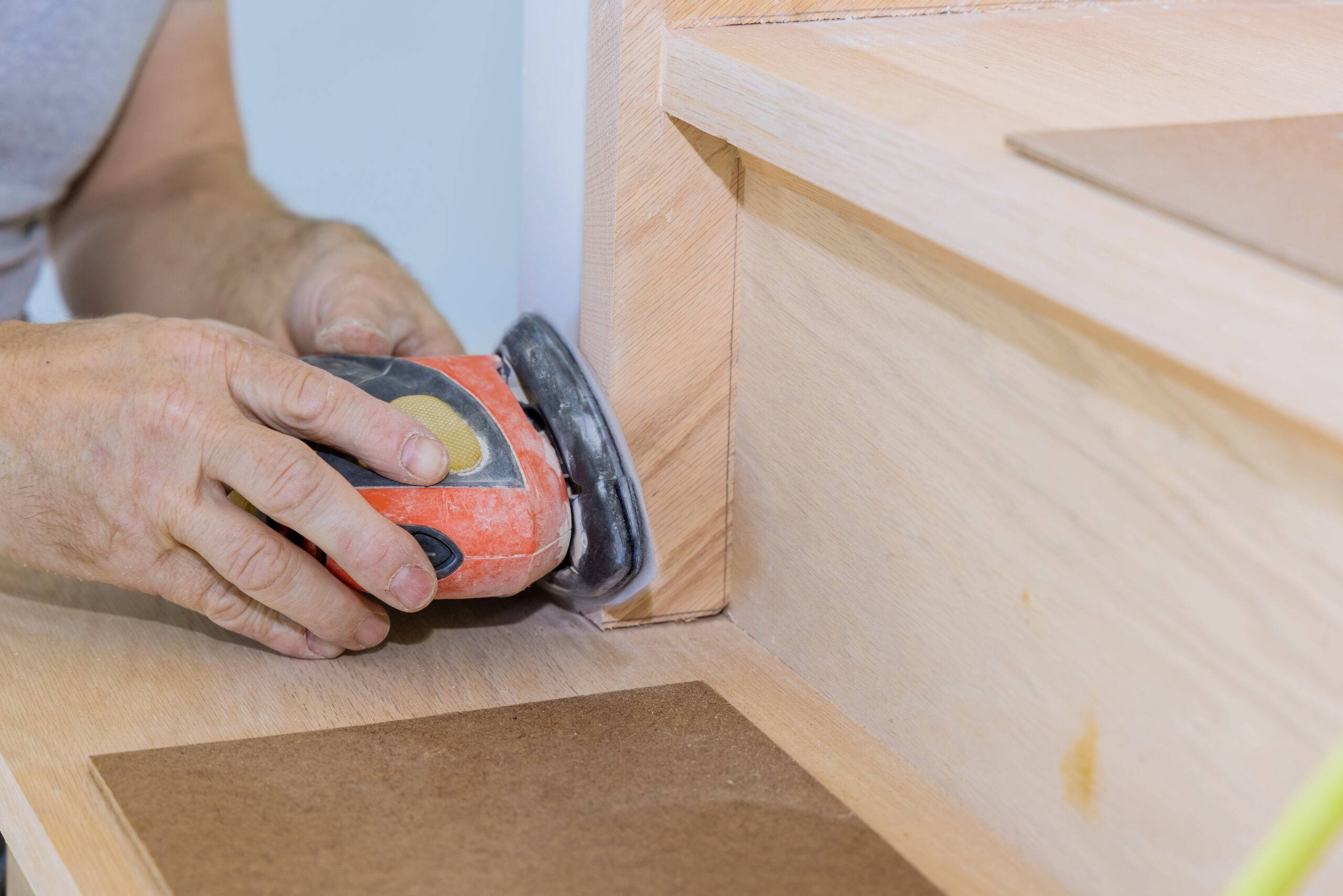
If you’re looking for a hardwood option, oak is a popular choice for DIY furniture projects. Oak is known for its durability and strength, making it a great option for furniture that will see heavy use. It also has a distinct grain pattern that adds to its aesthetic appeal.
However, oak can be more difficult to work with due to its density, and it can also be expensive compared to other hardwood options. Oak is a great option for those looking to create more complex furniture pieces such as dining tables, desks, and cabinets.
Tips for Working with Oak
Working with oak wood can be a rewarding experience, as oak is a hardwood known for its durability and beauty. Here are some tips to help you work with oak wood:
- Choose the right tools: Oak wood is a dense and hard wood, so it’s important to have the right tools for the job. Make sure your saw blades, router bits, and other cutting tools are sharp and designed for hardwoods.
- Use the right sandpaper: When sanding oak, it’s best to start with a coarse grit sandpaper, such as 80 grit, and work your way up to a finer grit, such as 220 grit. This will help you achieve a smooth finish without damaging the wood.
- Be patient: Oak wood can be difficult to work with, so it’s important to take your time and be patient. Rushing the job can lead to mistakes and damage to the wood.
- Pre-drill holes: When working with oak, it’s important to pre-drill holes for screws and nails to prevent splitting. Use a drill bit that is slightly smaller than the screw or nail you plan to use.
- Use a finish: Oak wood looks beautiful when finished with a stain or clear coat. Be sure to apply a finish that is designed for hardwoods to protect the wood and enhance its natural beauty.
Cherry Wood
*Resistant to warping and splitting but can be scarce
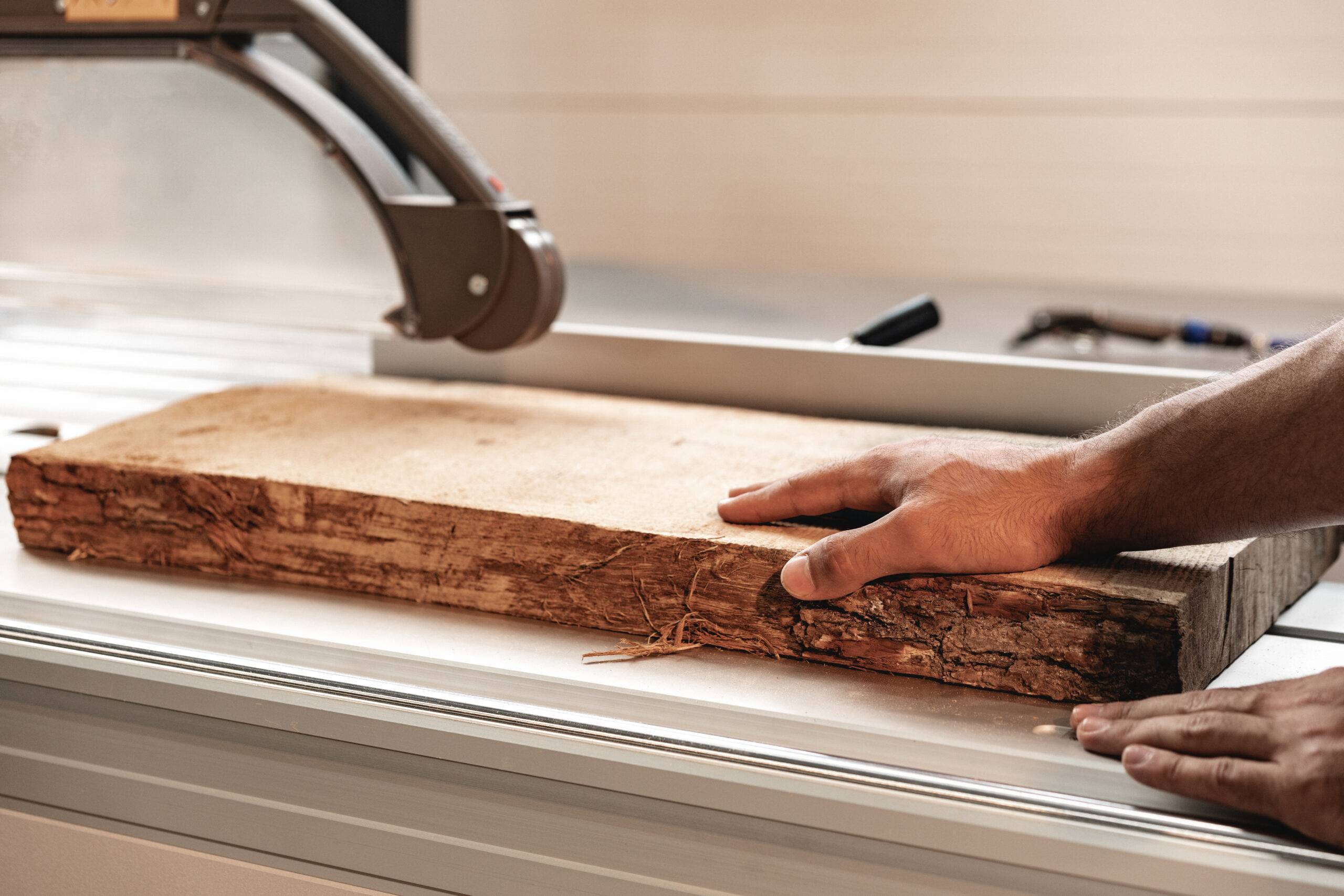
Cherry wood is another hardwood option that is highly prized for its rich color and unique grain pattern. Its reddish-brown color deepens over time and exposure to sunlight, giving it a warm and inviting feel.
Cherry is also known for its durability and resistance to warping and splitting. However, its high cost and relative scarcity can be a disadvantage for those on a budget. Cherry is a great option for those looking to create high-end furniture pieces such as dressers, desks, and dining tables.
Tips for Working with Cherry Wood
Cherry wood is a beautiful and versatile material that can be used for a variety of projects, from furniture to flooring. Here are some tips for working with cherry wood:
- Use sharp tools: Cherry wood is a hardwood that can be tough to work with, especially if your tools are dull. Make sure your blades are sharp and well-maintained to ensure clean and precise cuts.
- Sand carefully: Cherry wood has a fine and smooth texture, but it can be prone to blotching and uneven staining. To avoid this, sand carefully and evenly, starting with a coarse grit and working your way up to a finer grit.
- Use a conditioner: To further prevent blotching, use a wood conditioner before staining or finishing your cherry wood project. This will help the wood absorb the stain or finish more evenly.
- Be mindful of moisture: Cherry wood can be sensitive to changes in moisture, so be sure to store it in a dry and well-ventilated area. When working with cherry wood, be mindful of humidity levels and avoid exposing it to excessive moisture.
- Enjoy the natural beauty: Cherry wood is beloved for its rich and warm color, which deepens over time with exposure to light. When working with cherry wood, embrace its natural beauty and allow it to shine through in your finished project.
Maple
*Very durable but can be difficult to stain
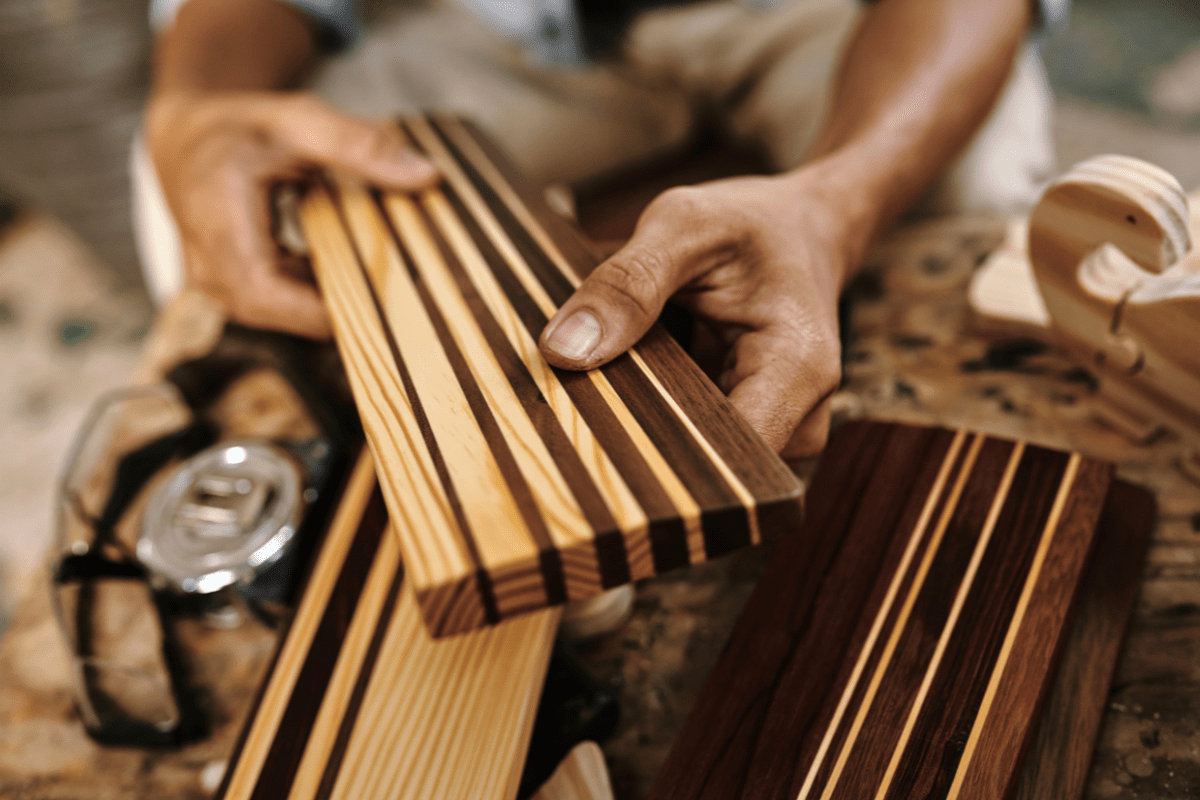
Maple is a dense hardwood that is often used for kitchen cabinets and other furniture pieces.
It has a light color and a smooth, uniform grain pattern. Maple is also very durable and resistant to wear and tear. However, it can be more expensive than other woods and may be difficult to stain evenly.
Tips for Working with Maple
Maple wood is a popular choice for furniture, flooring, and other woodworking projects due to its strength, durability, and attractive grain patterns. If you are planning to work with maple wood, here are some helpful tips to keep in mind:
- Choose the right tools: Maple wood is a hard and dense wood, so it requires sharp tools to avoid chipping or tearing the wood. Use high-quality saw blades, drill bits, and chisels to get the best results.
- Take your time: Maple wood can be challenging to work with, so it’s essential to take your time and work slowly and carefully. Rushing can lead to mistakes and damage to the wood.
- Use the right techniques: Maple wood can be prone to tearing and chipping, so it’s important to use the right techniques when cutting and shaping the wood. Avoid making deep cuts or trying to remove too much material at once.
- Sand carefully: Maple wood can be sensitive to sanding, so it’s important to use a light touch and work slowly. Start with a coarser grit sandpaper and gradually work your way up to a finer grit to achieve a smooth finish.
- Apply a finish: Maple wood can be prone to blotching and uneven coloring, so it’s important to apply a finish to protect the wood and even out the color. Consider using a stain or dye to achieve the desired color, followed by a clear coat of lacquer or varnish for protection.
Walnut
*Rich, dark color but may be difficult to work with due to density.
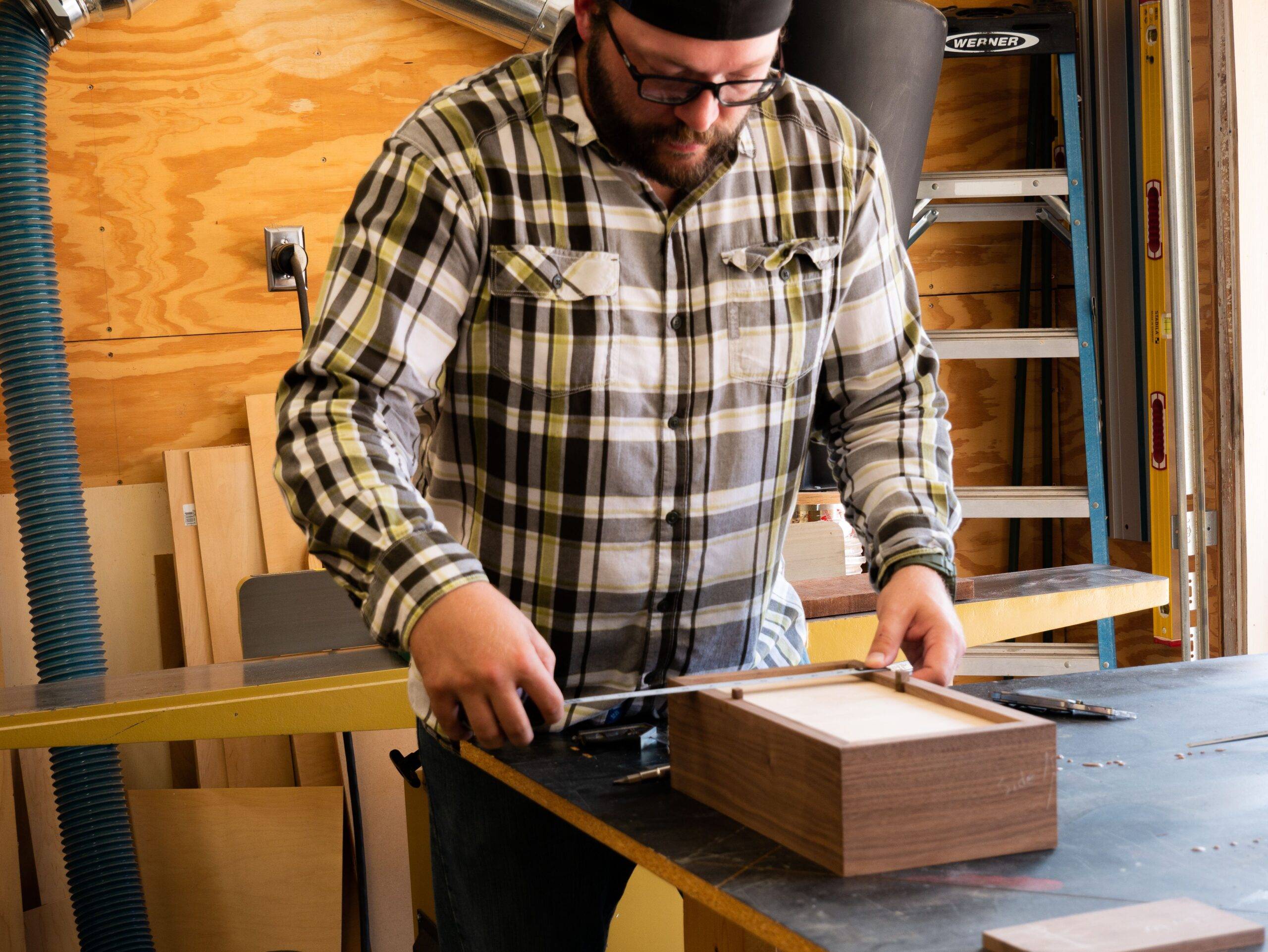
Walnut is a hardwood that has a rich, dark color and a distinctive grain pattern. It is often used for high-end furniture pieces and cabinetry. Walnut is also very durable and resistant to wear and tear.
However, it can be expensive and may be difficult to work with due to its density.
Tips for Working with Walnut
Walnut wood is a beautiful and versatile material that can be used for a variety of woodworking projects. If you are working with walnut wood for the first time, it can be helpful to keep the following tips in mind:
- Choose the right tools: Walnut wood is a hardwood, which means it can be challenging to work with using hand tools. To make the process easier, consider using power tools such as a table saw, band saw, or router. Make sure your tools are sharp and in good condition to avoid damaging the wood.
- Prepare the wood: Before you start working with walnut wood, it is essential to prepare it properly. This includes removing any rough spots, sanding it down to a smooth finish, and applying a coat of wood conditioner to help seal the grain.
- Take your time: Working with walnut wood can be time-consuming, but it is important to take your time to ensure you get the best results. Rushing through the process can lead to mistakes or uneven cuts, which can be difficult to correct.
- Use caution when finishing: Walnut wood can be sensitive to certain finishes, so it is important to choose the right one for your project. Test any finishes on a scrap piece of wood before applying them to your project to ensure they will not cause any damage.
- Enjoy the natural beauty: Walnut wood has a rich, warm color and beautiful grain patterns that make it a popular choice for furniture, cabinetry, and other woodworking projects. Take the time to appreciate the natural beauty of the wood and let it shine through in your finished product.
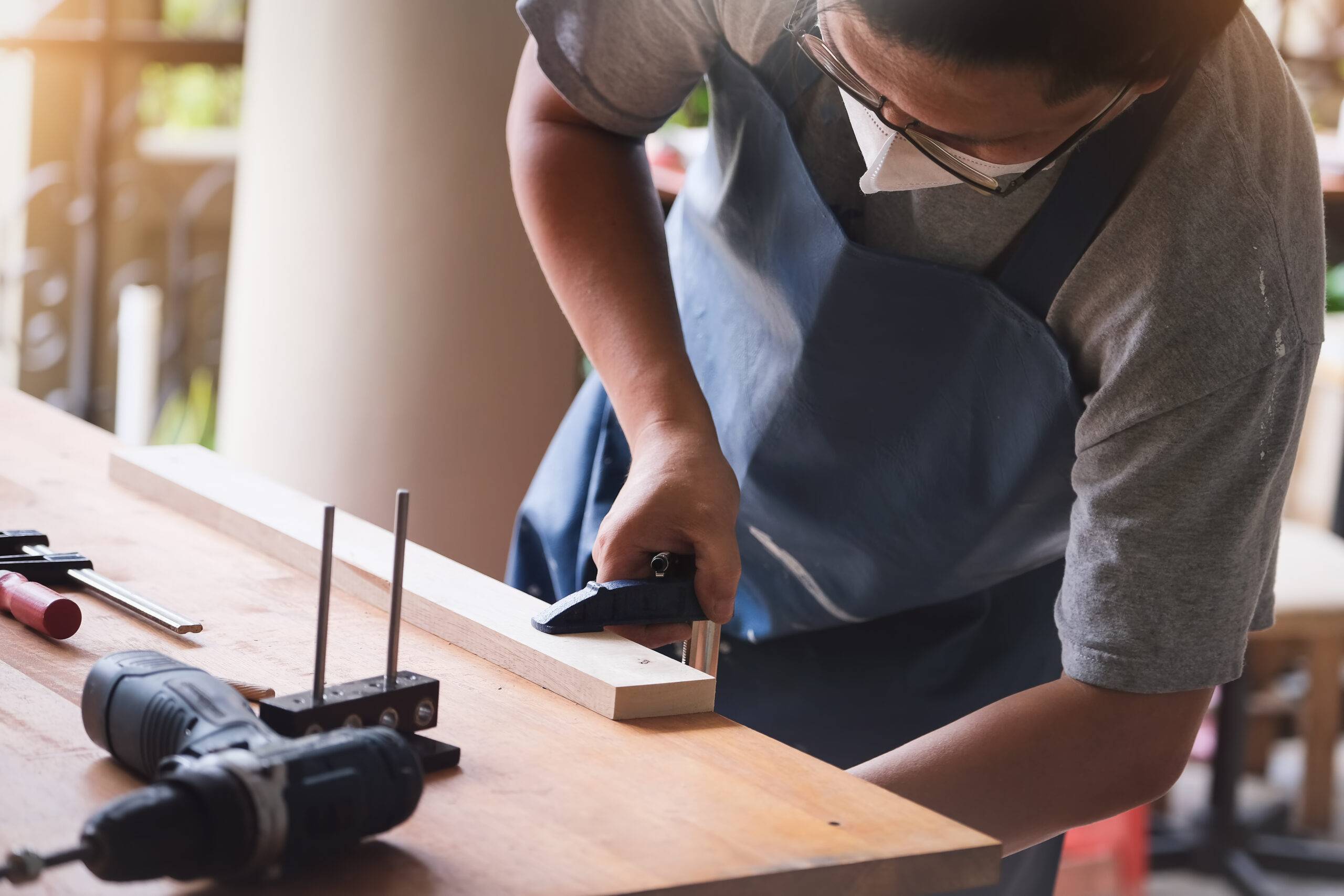
When it comes to DIY furniture projects, choosing the right wood type can greatly impact the quality, durability, and aesthetic appeal of the finished product. Pine and cedar are great options for those on a budget or looking to create outdoor furniture, while oak and cherry are popular choices for those looking to create more complex and durable furniture pieces. Ultimately, the choice of wood type will depend on the project at hand and the individual’s budget and preferences.




